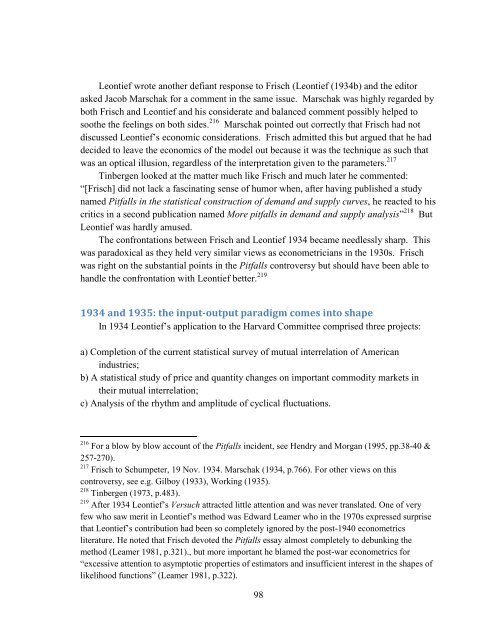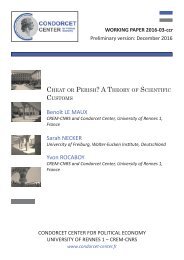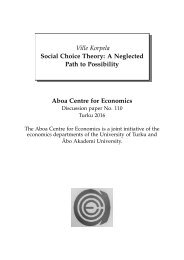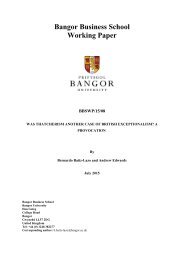MEMORANDUM
n?u=RePEc:hhs:osloec:2016_018&r=hpe
n?u=RePEc:hhs:osloec:2016_018&r=hpe
You also want an ePaper? Increase the reach of your titles
YUMPU automatically turns print PDFs into web optimized ePapers that Google loves.
Leontief wrote another defiant response to Frisch (Leontief (1934b) and the editor<br />
asked Jacob Marschak for a comment in the same issue. Marschak was highly regarded by<br />
both Frisch and Leontief and his considerate and balanced comment possibly helped to<br />
soothe the feelings on both sides. 216 Marschak pointed out correctly that Frisch had not<br />
discussed Leontief’s economic considerations. Frisch admitted this but argued that he had<br />
decided to leave the economics of the model out because it was the technique as such that<br />
was an optical illusion, regardless of the interpretation given to the parameters. 217<br />
Tinbergen looked at the matter much like Frisch and much later he commented:<br />
“[Frisch] did not lack a fascinating sense of humor when, after having published a study<br />
named Pitfalls in the statistical construction of demand and supply curves, he reacted to his<br />
critics in a second publication named More pitfalls in demand and supply analysis” 218 But<br />
Leontief was hardly amused.<br />
The confrontations between Frisch and Leontief 1934 became needlessly sharp. This<br />
was paradoxical as they held very similar views as econometricians in the 1930s. Frisch<br />
was right on the substantial points in the Pitfalls controversy but should have been able to<br />
handle the confrontation with Leontief better. 219<br />
1934 and 1935: the input-output paradigm comes into shape<br />
In 1934 Leontief’s application to the Harvard Committee comprised three projects:<br />
a) Completion of the current statistical survey of mutual interrelation of American<br />
industries;<br />
b) A statistical study of price and quantity changes on important commodity markets in<br />
their mutual interrelation;<br />
c) Analysis of the rhythm and amplitude of cyclical fluctuations.<br />
216 For a blow by blow account of the Pitfalls incident, see Hendry and Morgan (1995, pp.38-40 &<br />
257-270).<br />
217 Frisch to Schumpeter, 19 Nov. 1934. Marschak (1934, p.766). For other views on this<br />
controversy, see e.g. Gilboy (1933), Working (1935).<br />
218 Tinbergen (1973, p.483).<br />
219 After 1934 Leontief’s Versuch attracted little attention and was never translated. One of very<br />
few who saw merit in Leontief’s method was Edward Leamer who in the 1970s expressed surprise<br />
that Leontief’s contribution had been so completely ignored by the post-1940 econometrics<br />
literature. He noted that Frisch devoted the Pitfalls essay almost completely to debunking the<br />
method (Leamer 1981, p.321)., but more important he blamed the post-war econometrics for<br />
“excessive attention to asymptotic properties of estimators and insufficient interest in the shapes of<br />
likelihood functions” (Leamer 1981, p.322).<br />
98





